Ep. 47: One Thing At a Time
In dog training, we know it is advantageous to break things down, work one "D" (duration, distraction and distance) at a time. Doing so avoids confusion on behalf of the dog and prevents a multitude of issues and pitfalls from cropping up. Yet, when it comes to Scent Work training, these principles are either forgotten, pushed aside or flat out ignored!
In this episode, we discuss why identifying all the various individual factors or elements of a given search area and/or exercise is a good idea. We delve into the importance of balancing the difficulty level of the hide against those factors and how this will ensure forward progression in our training, as opposed to going backwards. Basically, being mindful and thoughtful in how we train, even in Scent Work, is the way to go!
Speaker:
- Dianna L. Santos
PODCAST TRANSCRIPT
Welcome to the All About Scent Work podcast. In this podcast, we talk about all things Scent Work that could include training tips, or behind scenes with your instructor or trial official may be going through, and much more. In this episode, I want to talk about the importance of doing one thing at a time. So before we start diving into the episode itself, let me do a very quick introduction of myself. My name is Dianna Santos. I'm the Owner and Lead instructor for Scent Work University, Dog Sport University, and Pet Dog U. These are all online dog training platforms that are designed to help you achieve your dog training goals. And we're very fortunate to have a client basis worldwide. For Scent Work University, in particular, we offer online courses, seminars, webinars, and eBooks that are all designed to help you achieve your Scent Work training goals. Let's dive into the podcast episode itself.
So then in this episode, I want to talk about the importance of doing one thing at a time when it comes to Scent Work. And it's surprising, but for people who are familiar with dog training, one of the ways that you can ensure that you can be more successful is by avoiding something called lumping, or doing too many things at once, right? So if we just take a large macro view of everything, if you're working on something like a stay, for instance, you want to break down what they call the three Ds, duration, distraction, distance. You don't want to work on those three Ds at the same time, at least when you're first teaching the skill.
So the very first thing when you want to work on with a stay, in my opinion, is getting the dog to hold the position for a longer period of time. So you're working on duration. Then once that's pretty solid, maybe then you want to work on distractions. But that means when you start working on distractions, your duration that you're asking for is a lot smaller.
So you may have a dog who now is able to hold their stay for a minute, two minutes, five minutes, 10 minutes, however long. But now when you start working on distractions, you bring that back down again.
It's not that they can't do a longer stay, but because you're working on distraction, you take away the duration requirement if that makes any sense. And then when you're ready to work on distance, same thing, the dog can do duration. The dog can do distractions, but you're taking those back down again so you can concentrate more on the distance piece.
What does any of this have to do with Scent Work? Well, again, this is a very common way of teaching and training dogs. It's an effective way of training dogs, making sure that we're not lumping. But yet, when it comes to Scent Work, for some reason, we seem to forget this premise and we throw everything in the kitchen sink at the dog and say, "Well, they just have to find the hide." Not recognizing that there may be multiple things going on at the very same time within a given search.
So all of this was in the forefront of my mind because over the last two weeks, I've been offering two different webinars. One was our Field Trip Training On Your Own Webinar and the second was When Proofing Goes Wrong Webinar. And in both of those, they highlight some of the common pitfalls that people fall into when they're doing Scent Work. And really a lot of it boils down to we're doing too many things at once.
So when you talk about field trip training, the goal, generally speaking, is that you want the dog to be able to search anywhere, right? Particularly if you're interested in trialing, it's basically a requirement, your dog can't just search in your house or search at your friend's house or search at the training center you may be working in with an instructor.
They need to be able to go to different locations because the trial sites are going to be at different locations. But whereas you may think the only thing you're changing is where they're serving, there are a lot of other things that are changing in addition to that. And I think it's not recognizing those changes that gets people into trouble. And it's the same exact thing we're talking about proofing. So, as I've talked about that webinar, a lot of people only think proofing is about distractors, but actually, it's a lot more than that. It ties into the whole, "I want my dog to be able to search anywhere in any kind of conditions in any kind of situations and still find their hides". But again, that statement is huge, right?
So much going on. There's so many different elements, there's so many different factors and facets and things that could be going on that individually may actually be problematic for your dog. And you may actually need to address it completely outside of Scent Work. So in this podcast episode, what I really wanted to do was to encourage people to more critically evaluate what their training scenarios look like, what it is that you actually are trying to work on, be it a given skill, practicing something, perfecting something, wherever the case may be, and then see what other things are actually going on in the very same time. Are there ways that we can break these things down further? Could we isolate more individual things so that we're not lumping? Could we practice the whole idea of doing things like following the 3D role of only working on one of the Ds duration, distance, distraction, only one at a time? And then maybe once a dog understands putting them more together.
I think the answer is yes. The problem is that people have is that it requires a little bit more forethought and critical thinking and evaluating. And one of the allures about Scent Work is that, "Well, I just put the hides out and I can do it last minute and it's no big deal and the dog goes and does it. And it's fine." That can be true, I guess. But again, if you're trying to get certain results, if you're looking for your dog to be successful in any measurable way, particularly if you're interested in trialing at the higher levels, and if your dog is just a normal dog, who's going to have certain things that are bugaboos, certain things they do really well with, certain things they just never experienced before. It stands to reason that at some point, you're going to hit a wall.
At some point, something is going to happen where the whole, "I'm just going by the seat of my pants" approach doesn't work. So what I'm urging people to do is instead of hitting that wall way down the line where you could have been inadvertently baking in all these issues along the way is be a little bit more mindful all along and keep track of what it is that you've been doing. See what patterns you may have fallen into, what holes you may have in your training, just because you weren't thinking about it, right? Because we were just, "Oh, I have five minutes. Let's go search." And I'm not asking people, or encouraging people to turn this into a chore. That's not what I want in any way, shape or form. I want people to feel inspired. I want people to feel as though this is a really fun game.
This is a great activity. They can go and do it and it's going to be great. But if we develop good habits ourselves as handlers and trainers, then these little things that I'm asking for are not that bad. They're not going to take a whole lot of time and they will help you immensely in the long run. So again, the two webinars, talk about this stuff in more detail. But basically, it's trying to figure out how can we identify the individual things may be going on in a given search or an exercise that we may want to do and just making a really quick chart or a list or something, something that's easy for you to visualize. What are the difficulty levels of these individual things? Am I doing it so that everything is really super hard or really super easy? It's just that the really super hard stuff is problematic, but you could not have any progress because the dog isn't being stretched at all, right?
You're not asking them to continue to progress. You're just asking them to just keep doing the same old, same old. And they're like, "Okay, that's fine." But then you're not able to go to the next level. Right? But if we're able to make these lists, if we're able to determine for this search area, not only do I have the search area itself, right? Within that search area, I have these different things going on. I have for an exterior search, we have a bush where the bunnies like to live. Where the cicadas are coming out, if that's the thing in your area, it's the time of day where the neighbor likes to be out with their dogs. And there's a solid fence, whatever else, but we're going to be able to hear them. Right? And on the other side of me, I have a neighbor who likes to... They're mowing their lawn or something.
So these are environmental things I know are going to be going on. They may or may not matter in any way, shape or form, but being mindful about them. You can then say, "Okay, with my little chart, this is where they rank as far as level of distraction or concern even, or novelty to my dog. Or I don't know what they're going to do. I don't know what the effect is going to be." What is my goal with the search? Do I just want my dog to be able to work the space competently, efficiently and in a focused way to find their hide. In that case, then set an easier hide, right? You just want them to go out and hunt. So let them go out and hunt. There's no need to set an impossible hide when you have all these other things going on.
It's all about building a history of good repetitions of rewardable moments so that the dog understands what it is you want them to do. Because again, they are an alien species just completely guessing what it is that we want. We need to try and make that as clear as possible. So if my goal is, "I want my dog to go into this space where all this other stuff is going on and I want them to hunt." Then just make the hide really straightforward. It doesn't need to be impossible and maybe have a couple different runs where you change different elements a little bit, but still keeping the hide fairly straightforward, right? And reward the bejesus out of the dog, tell them how great they are. There are so many people who would look at that and be like, "That's nothing." But it's not true. We just talked about all these different things a dog has to contend with.
And it could very well be that it goes amazingly well. And I'm asking you, why is that a problem? That's a good thing! We should be celebrating that the fact that your dog went into this space with all this stuff going on and they were able to figure out all the elements that are affecting the odor picture itself and found their hide. That's what you want them to do anyway. If they did that at a trial, you would be elated, you would be so happy. You wouldn't be sitting there arguing with me like, "Oh, well, it was just too simple." No. You will be so happy. You will be delighted with your cue. And if you earned a title, you would show it off proudly.
So again, I think sometimes we just forget that all of these things matter that there can be a stacking effect that we could actually be making exercises that are way too difficult for no reason. And we could actually be making it so that we're not providing the rewardable experience that we want. At the end of the day, we want the dog to find the hide, make it so the dog can find the hide. Then make it incrementally more challenging so they have to apply all the skills you've been building up to that point so they can't find the hide, but don't at the very outset making impossible from them to find the hide. Doesn't make any sense. So this is the thing that I really wanted to try to stress with this episode is look at your search areas a little bit differently. And that whole thing of manipulate the environment, not the dog. These are sayings that have been around, that worked for a long time.
Trust your dog, read the dog, it depends. All these things are true, but I think they've been said for so long that we just say it without explaining it, or even thinking about or diving down to what it actually means. Manipulating the environment means the environment is a thing that you can then change and shift. And that every little piece of it is part of the grander puzzle, and that should be exciting, that should be inspiring. That should have you look at a search area with giddiness and be like, "I can do all these different things at the search area, and that's amazing." Right now, they're wrapping up the Virtual Nose Work camp for dogs, of course, which again, if you haven't done any of the Nose Work camps with them, with NACSW, I highly recommended them. They're very, very good.
And they do in-person stuff in that during COVID they're doing virtual stuff. I hope they continue doing virtual stuff going forward because it just allows more people the opportunity to participate. But the big thing that I know I'm noticing from how people are reacting to the presentations is this feeling of, "Wow, I have all these new ideas. I have all these great things that I can do with my dog. And I had no idea that I could just do different types of setups, even with just one object. With just one thing, how can I design different searches with just one thing?"
And again, excellent presenters. Again, strongly urge you to check all that stuff out, but that's how we should be approaching our search areas. That's how we should be approaching all of our search exercises. It doesn't have to be this big, huge, super complex. You have to go into the middle of a busy park while they're holding a concert to do your search. Could you eventually do that? I guess we can have a debate about whether or not that's valuable or not. But the thing that I really want people to understand is that you can and should be able to peel out or pick out individual elements from any given exercise. And really exemplify, what is the value of this thing? And understand that the whole premise is we want the dog to find the hide. We don't want the dog messing with distractions. We don't want the dog being distracted. We don't want the dog shutting down.
We don't want the dog giving up. We don't want the dog stressing up. We don't want the dog destroying things. We don't want any of this stuff. Right? We want the dog to find the hide and that's it. So the more that we can organize our training and we can get everything with that in mind, I think the better off we'll be. And then, you can start talking about and diving into, "Okay. Well, where am I going to search? And what type of exercises am I going to do? And what type of proofing things will I need to do?" And then maybe you can talk about reverse engineering. "Well, I saw this at a trial or I was volunteering at a trial and I saw they did this, or I saw a video of someone at a trial and this and this and this happened and now we want to practice it."
That's fine. I don't think that experiencing those things or trying to, or identifying what may have happened at a trial and then trying to figure out how you can prep for it is necessarily bad. How you go about that is really the key point and realizing that there are things that may very well be something that is... We may have to take these individual things work on them separately. And there may also be parts of your training, parts of the things that are problematic, issues that you're experiencing or elements of a given search that have nothing to do with Scent Work at all. So an example of that would be if your dog had environmental sensitivity, in my opinion, you should not be trying to quote unquote, fix that in Scent Work. It should be helping them become more comfortable with that environmental thing outside of Scent Work completely. Improve their confidence about that.
Have that be addressed across the board and then weave it back into your searches. That of course may take some more time, but that's not a bad thing, right? I would rather that you identify something like that and have to put off going into a trial, work on it for however long, couple of weeks, maybe a couple of months, it all depends. And then enter a trial and have it be an ace. Have it be such a great experience and no fallout for you or your dog than just saying, "No, we're just going to do it this other way. We're just going to blast forward, and full speed ahead. I don't want to do what this Santos lady said." And then have you go to trial, after trial, after trial, after trial with... You're not getting all the hides, the searches aren't going the way they're supposed to be going.
You're frustrated, the dog is stressed. It's just a mess. And when you get into a situation, that means you're going to be training more because now you're trying to quote unquote, fix it. And if you're doing that within the context of Scent Work, it's only going to make it worse. Because again, the problem in that scenario is not that the dog can't find the hide. It's not that the dog doesn't understand the odor picture, is that the environment is the problem. And that is probably a problem in all contexts of the dog's life, not just in Scent Work. So to wrap up, I think it's helpful for us to be able to look at Scent Work a little bit differently than I think a lot of people do. I am not encouraging people to take away the lead roles the dogs should be playing in Scent Work, that is not what I'm advocating at all. But the absolute premises and the principles of dog training apply to Scent Work as well.
And when we are putting together our exercises or practice sessions, we need to have a goal in mind. We need to know what exactly it is we're trying to work on, and we need to make sure that we're not lumping. And even when we're designing searches, we have to recognize that there could be multiple elements in play. There could be multiple things going on at the very same time that could be completely detrimental to what our goal is. And that we may have to break that down further, that we have complete control over the environment that we're setting up within the search area. Even if you go somewhere else that you don't have control about what's going on, let's say you went to a public place of business, whatever else. You don't have control over foot traffic or what people are doing or people are doing around the search area or whatever.
But you absolutely have control over A, whether they're going to search that at all. And B, what your hide's going to do? Where is your hide? What's the difficulty level hide? And what your expectations are. So if we take that view of not lumping, of truly leveraging the entirety of the search area and what it is that we're doing with our hides, we can progress further with our dogs because we're not injecting any kind of uncertainty, muddying of the picture, confusion, stress shutting down, negative associations, all these terrible things can happen if we aren't thoughtful. So that's the big thing is just, how can we be thoughtful? How can we break it down? How can we not view Scent Work in a way that discounts what we know about dog training and what we know about just teaching and learning in general. So again, if you wanted any more additional information about these sorts of things, if I've piqued your interest and you're like, "Yeah. I would like some more details, please."
Those two webinars, again, are the Field Trip Training on Your Own and the When Proofing Goes Wrong. So the replays are posted on our site. You're more than welcome to check those out. We are going to be finalizing eBooks for both of those as well. That will be companions. The Field Trip Training one, I am hoping against hope that should the technology gods be kinder to me will be finalized later on today. I want to post in this podcast. So you can check out that as well. In addition to that, I want to hear from all of you guys, what other types of topics are you interested in for us talking about in these podcasts? We are going to be including some more discussions with some of our instructors and outside speakers as well.
So I'm looking forward to that and we have received some really great questions. Please keep those coming. As far as questions you have about Scent Work, questions that you have about training questions that you have about things that we may have posted as far as blogs or podcasts, or even courses or webinars or whatever. I want this to be something that is helpful for everyone. Let me put this way, I'm very open to discussion. I may have certain opinions and preferences of training and whatever else, and that may not move, right? We may have a discussion. I may come up the other end and be like, "Yes, I still have that idea." But it could very well be that we have discussions and be like, "Wow, I didn't think about it that way." I want to promote more of that. I want to promote more open thought and discussion and debate about things, not just that this is the way to do it, just do it. And don't ask me any questions. I don't think that's overly helpful and also understanding that every single dog and handler is going to be different.
So what may work for certain people or certain dogs may need some tweaking with others or may just not work at all with others. And that doesn't make it wrong, that doesn't make it bad, it just means that we have to be aware of those things. So let us know, we'll be posting this podcast episode up on our Facebook page for Scent Work University. So let us know in the comments of that post, whether or not this was helpful. If there are other topics that you're interested in, if you have questions about Scent Work, Scent Work training, if there's something that is just been gnawing in the back of your mind, if there's something that you've tried, and then you're wondering like, "Well, does anyone else think about this?" We want to hear from you guys. So by all means, please participate. We'd love to hear from you, but I hope this episode was a little bit helpful. I hope you guys enjoy the rest of your day. Happy training. We look forward to seeing you soon.
Join Our Newsletter
Stay up to date with all the happenings at Scent Work University, including the release of new online courses, seminars, webinars, eBooks and receive exclusive promotions and discounts!
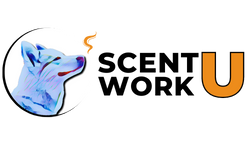
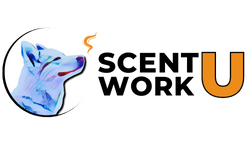
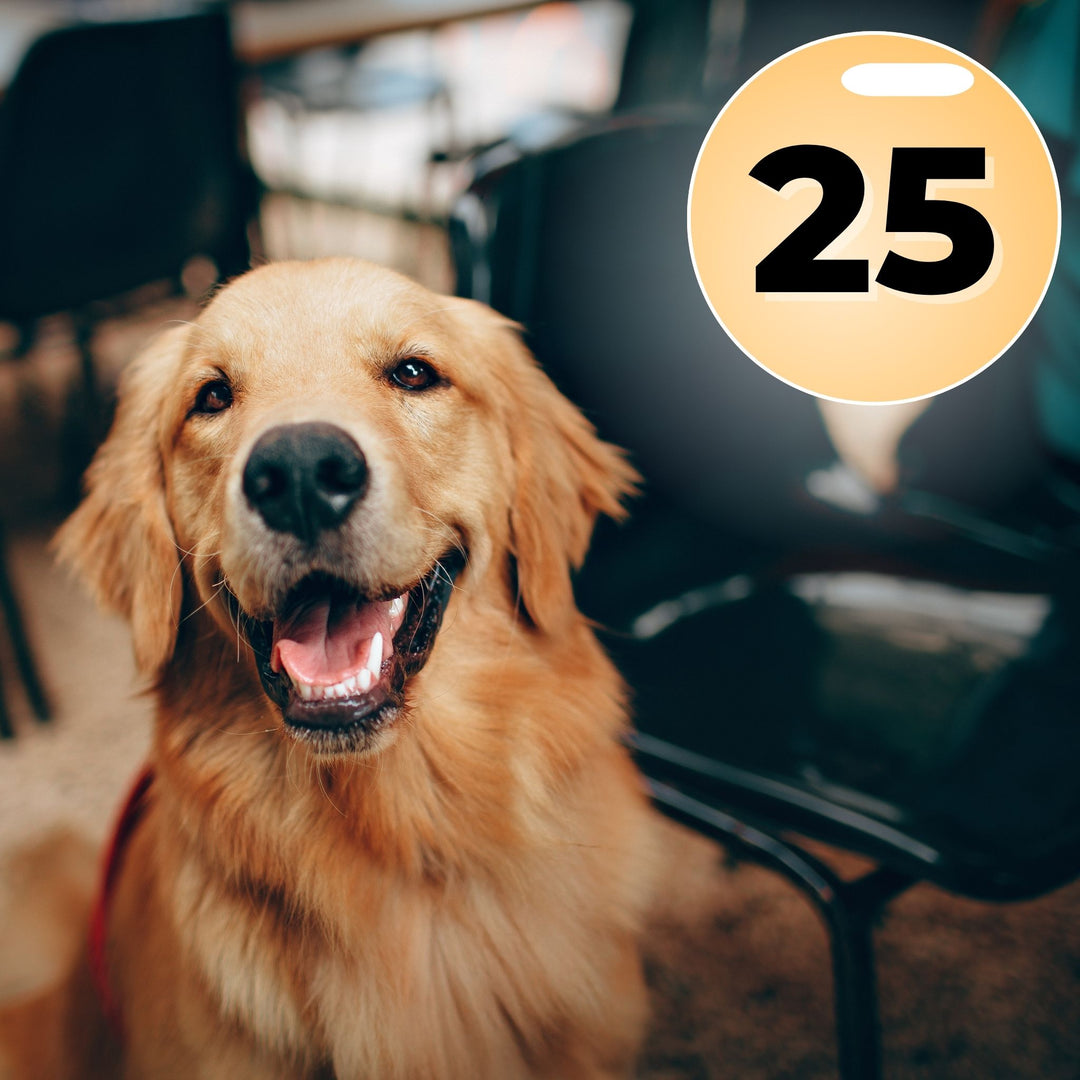
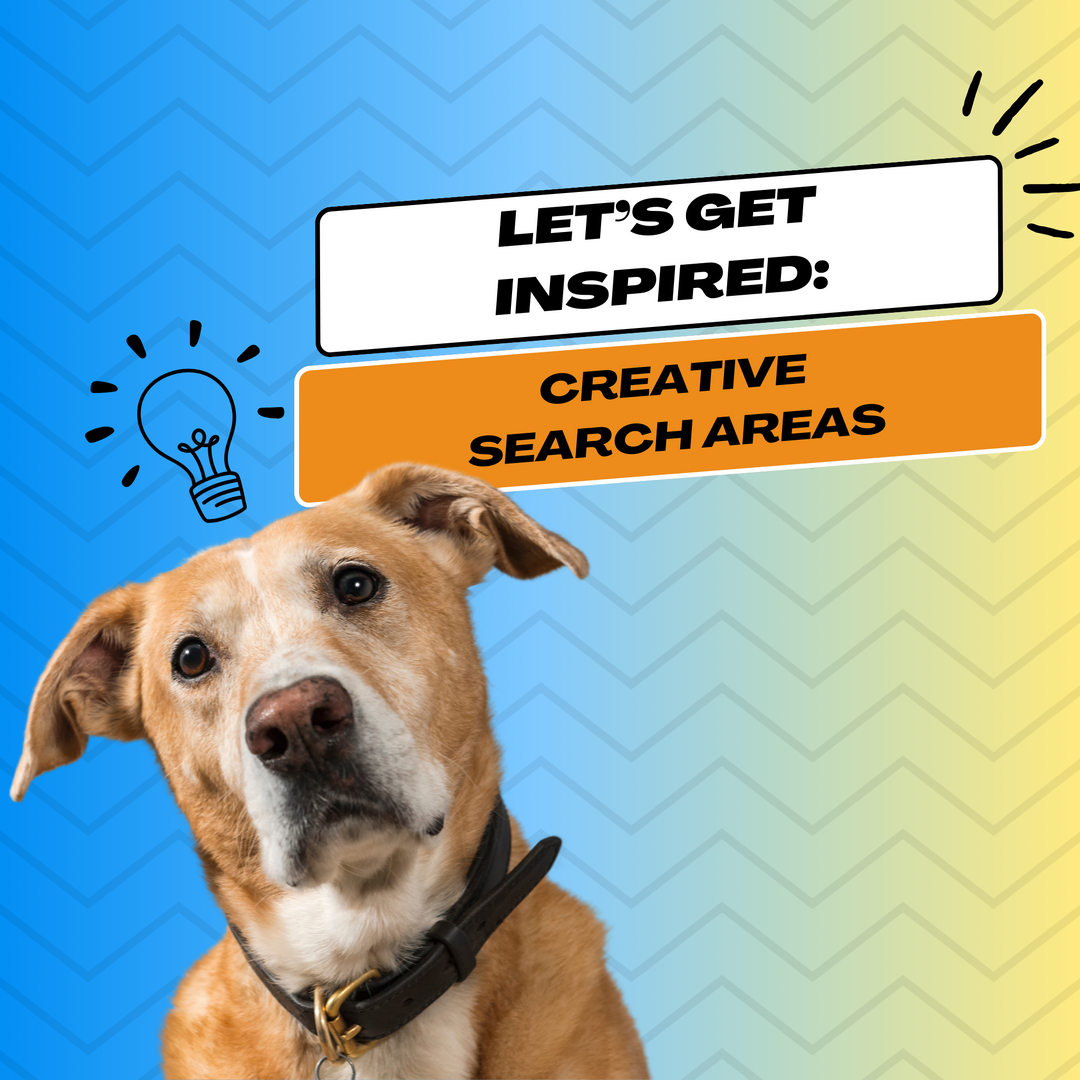
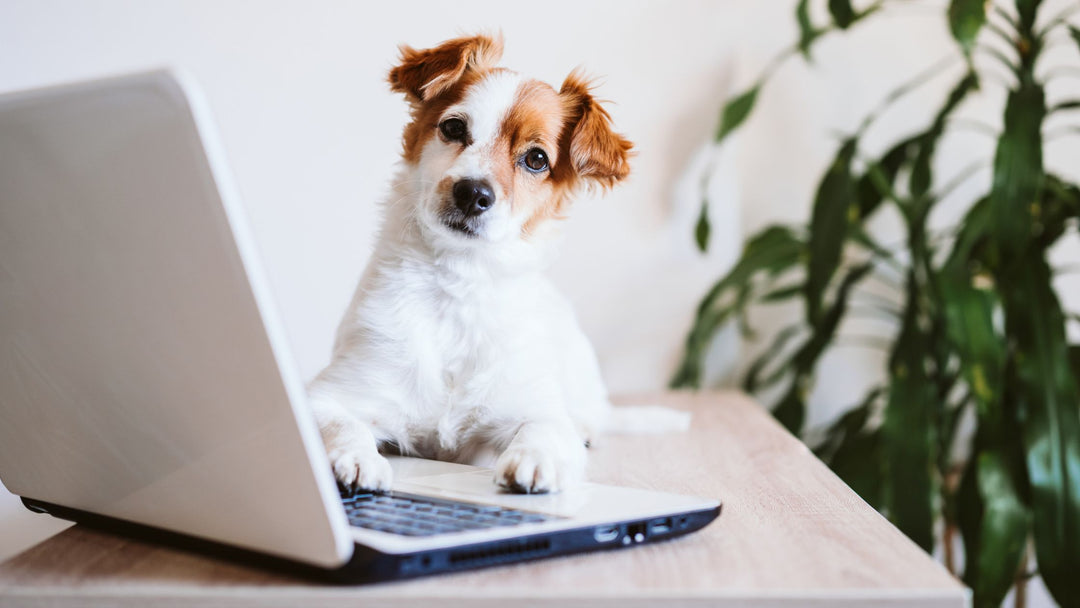
Leave a comment